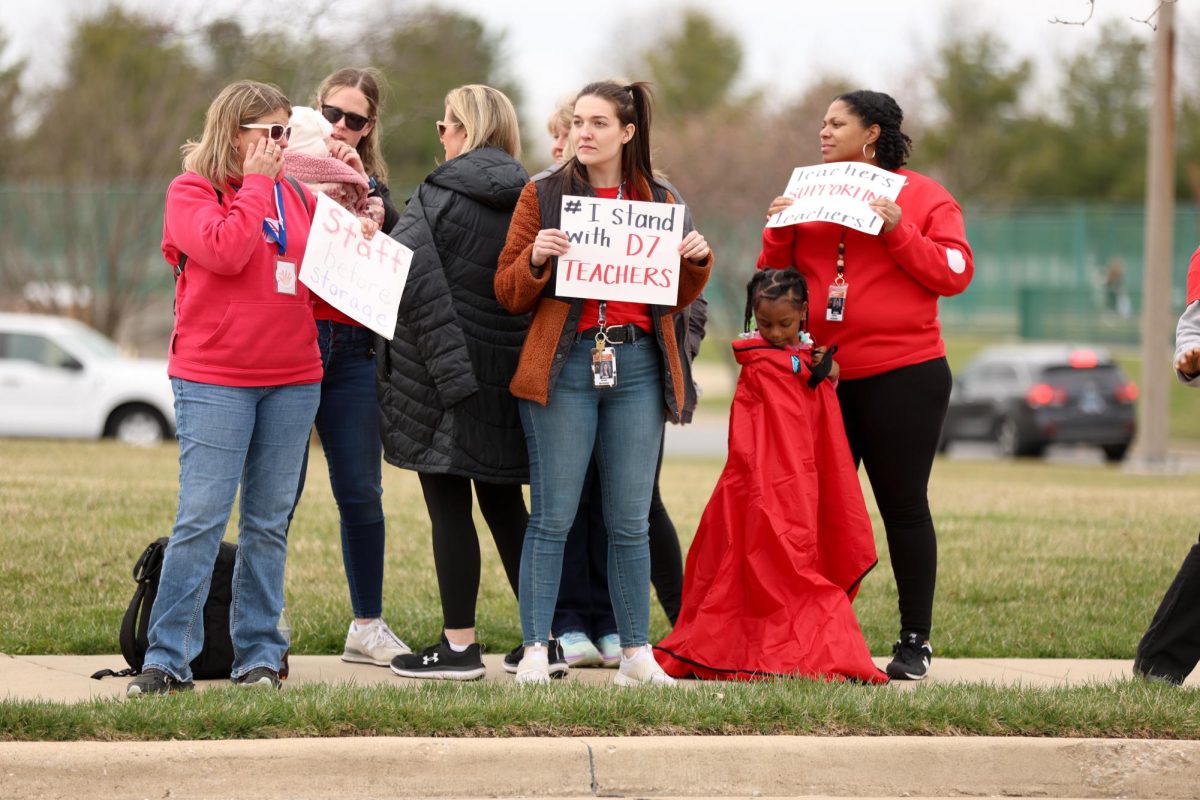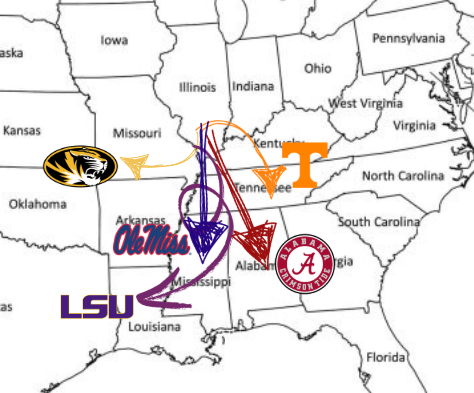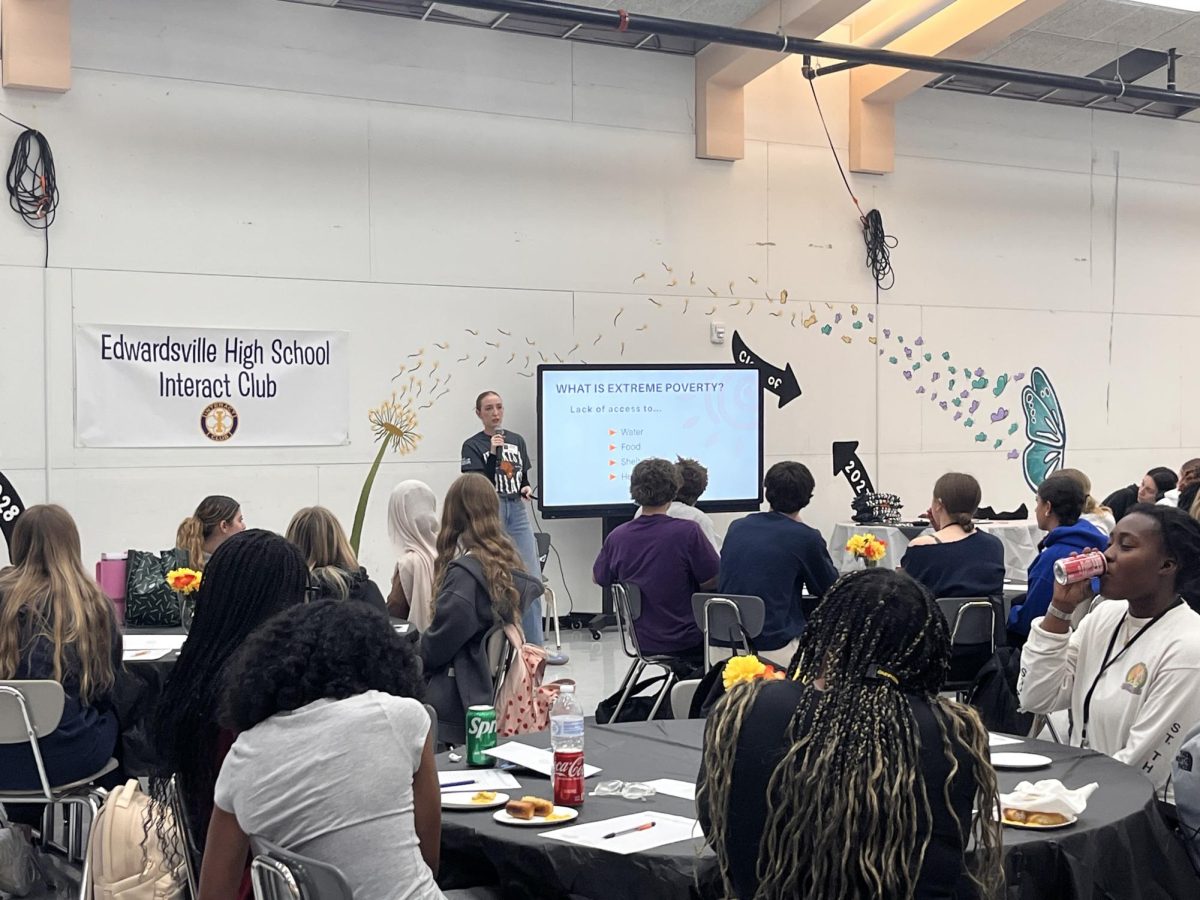Recovery Road or Unpaved Lanes: A Look into Higher Education Funding in Illinois
August 24, 2017
For EHS seniors, the once looming “C” word has emerged from foreign territory, no longer lingering in a hazy periphery of hometown happiness. Yes, the college season has begun.
With that, seniors must surmount a host of decisions, the most important being “Where do I see myself next year? What is the best school for me? Where should I go?” Many students, including senior Lilli Thalmann, will look toward in-state institutions.
“(I want to go to SIUE because) they have multiple programs (offered),” she said. “My siblings that have gone there say that switching majors is easier than some schools so that makes me want to (attend) because I’m not exactly sure what I want to major in yet. It’s also close to home and would be easier to commute to.”
According to Katie Lobosco of CNNMoney.com, in the 2015-2016 school year, 61% of funds were reduced from Illinois collegiate budgets; cuts were made to staff—faculty, custodial and library—and to the money appropriated for low-income families who feared losing their scholarships.
Following the passage of an Illinois state budget for the first time in two years in early July, it seems that starved universities are about to receive the funding they desperately need. However, most of the funds from the 2016-2017 year were spent on unpaid bills from the previous academic term.
Another caveat is the new clause installed into the state budget, which lowers funding for higher education by 10% annually. Though the Monetary Award Program, or MAP, has been reinstated with an extra $36 million, totaling to over $400 million, according to NBC Chicago. So, what does that mean for this upcoming year?
Former EHS student Jessica Krebs is about to begin her academic career at University of Illinois at Urbana-Champaign.
Krebs did not receive any scholarship money from the state, though she found the approximate $33,000 yearly tuition to be an economical price in comparison to other schools.
“(I chose U of I) mainly because of the great engineering program,” she said. “I’m (a) chemical engineer. It’s a large school, so they have a lot of resources for their students, like internship opportunities, helpful counselors and great professors.”
Despite these accolades, her parents still held reservations about the lack of a state budget.
Now that a budget has been enacted, the pressure has been lifted from university presidents’ shoulders all throughout the state, though there is work still left to be done.
During the standoff, enrollment to state universities dropped by 11%; Chicago State University only had 86 students enroll in its freshman 2016 class (the undergraduate population is close to 4,000), Rick Seltzer of InsideHigherEducation.com found.
According to Chicago State University’s Chief Administrative Officer Paul Vallas, the school wants to become less reliant upon state funds and more fiscally independent.
“We used to get about a third of our revenue from the state,” Vallas said to Seltzer. “Now it’s in the high 20s. We’d like to be less dependent on state funding, and we’d like to be more financially self-sufficient.”
Vallas did not clarify how he wants the school to become more financially independent.
The news of Illinois schools slowly recovering comes at an opportune time for senior Morgan Swanner.
“I’ve decided to apply to SIUE because it’s close to home and I have heard that they have a good medical program,” she said. “I want to become a Newborn Intensive Care Unit Doctor.”
On my own personal college tour, I was handed some advice from a Wesleyan student: no matter where you end up, it’s what you make of it.











